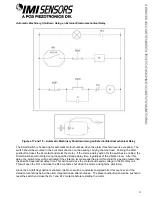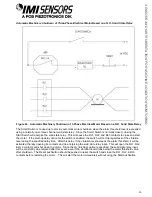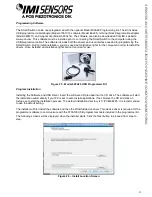
PAGE 8
SENSO
RS AN
D INS
TRUME
N
TATIO
N F
OR MAC
HINE
CON
DITION M
ONIT
ORIN
G
Magnetic Mount Procedure
Magnetic mounting provides a convenient means for making portable measurements and is commonly used for
machinery monitoring and other portable or trending applications.
Note: The correct magnet choice and an adequately prepared mounting surface are critical for obtaining reliable
measurements, especially at high frequencies. Poor installations can cause as much as a 50% drop in the sensor
frequency range.
Not every magnet is suitable for all applications. For example, rare earth magnets are commonly used because
of their high strength. Flat magnets work well on smooth, flat surfaces, while dual-rail magnets are required for
curved surfaces. In the case of non-magnetic or rough surfaces, it is recommended that the user first weld, epoxy
or otherwise adhere a steel mounting pad to the test surface. This provides a smooth and repeatable location for
mounting.
Figure 6
– Magnet Types
Step 1: After choosing the correct magnet, inspect the unit to verify that the mounting surfaces are flat
and smooth.
Step 2: Stud-mount the accelerometer to the appropriate magnet according to the guidelines set forth in
Steps 2 and 3 of the Standard Stud Mount Procedure.
Step 3: Prepare a smooth, flat mounting surface. A minimum surface finish of 63 µin [0.00016 mm]
generally works best. After cleaning the surface and checking for burrs, wipe on a light film of silicone
grease, machine oil or similar-type coupling fluid.
Step 4: Mount the magnet/sensor assembly to the prepared test surface by gentl
y “rocking” or “sliding” it
into place.
Note: Magnetically mounting accelerometers carelessly has the potential to generate very high (and very
damaging) g levels. To prevent damage, install the assembly gently. If unsure, please contact the factory for
assistance.














































